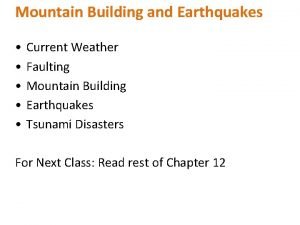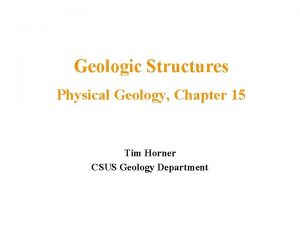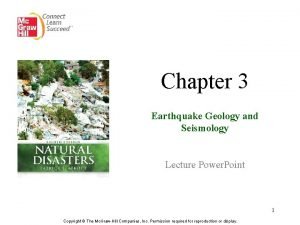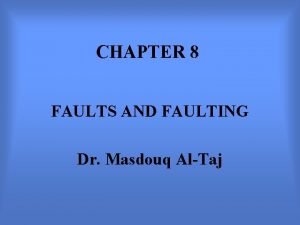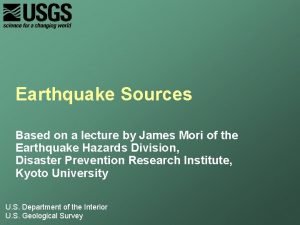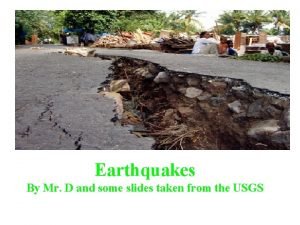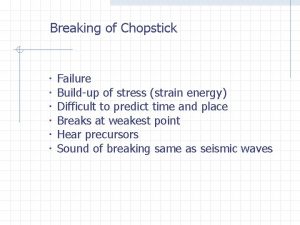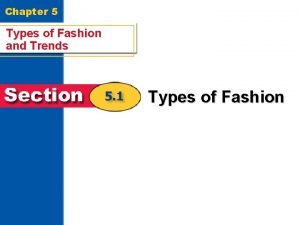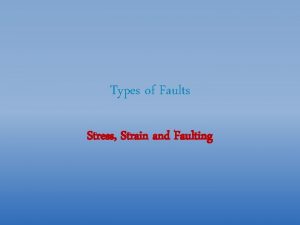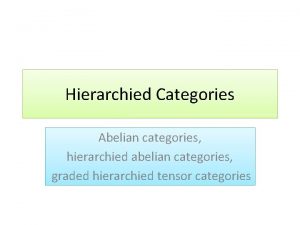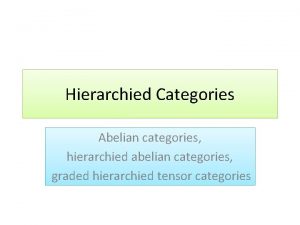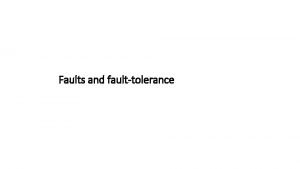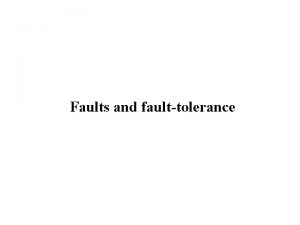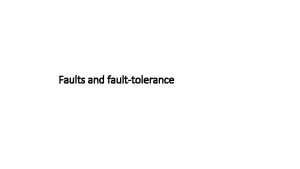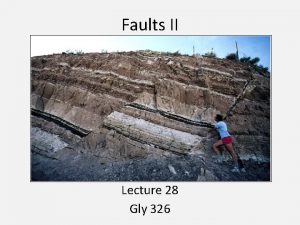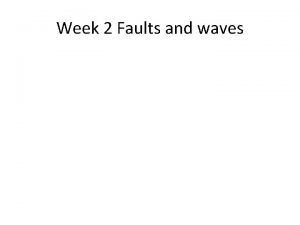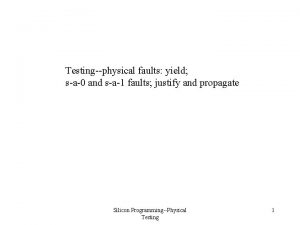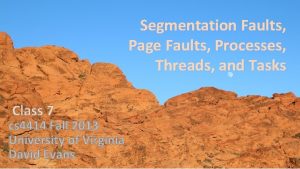What are the categories and types of faults











- Slides: 11

What are the categories and types of faults, and what type of stress produce each? LEQ: Key Terms: displacement, strike slip fault, dip slip fault, right lateral fault, left lateral fault, normal fault, reverse fault, thrust fault Use the following link to help you with the definitions of your terms: USGS Earthquake Glossary

Your Model In this power point you will be discovering the different kinds of faults through the discussion and the animations. As you go through the power point, use your fault model to help you visualize the movement of the hanging and footwalls, and how the three types of stress cause movement along the fault. 2

Categories of Faults A fault is a break in Earth’s crust where slabs of rock slip past each other. There are two primary categories of faults that are determined by the direction of the displacement (movement) Strike Slip Faults Horizontal displacement Dip Slip Faults Vertical displacement 3

Strike Slip Faults Strike slip fault: A category of faults where rock blocks on either side of the fault move past each other horizontally (sideways) with little to no up-or-down (vertical) motion. Horizontal displacement. by the stress of shearing. Animation Caused 4

Types of Strike Slip Faults Strike slip faults are classified by the horizontal direction (left or right) the rock blocks move with respect to each other. For our study, we will concentrate on two primary types of strike slip faults Right lateral fault Left lateral fault View the animations of Right Lateral and Left Lateral strike slip faults After viewing the animations, use your fault model to demonstrate a right then a left lateral strike slip fault. 5

Dip Slip Faults Dip slip fault: The category of faults where rock blocks on either side of the fault move past each other vertically (up or down) with little to no horizontal (sideways) motion. Vertical displacement Dip slip faults are caused by the stress forces of tension compression 6

Types of Dip Slip Faults Dip slip faults are classified by the vertical direction (up or down) the rock blocks move with respect to each other. For our study, we will concentrate on three primary types of dip slip faults Normal faults Reverse faults Thrust faults 7

Normal Faults Normal fault: a type of dip slip fault where the hanging wall moves vertically downward with respect to the footwall. Caused by the stress of tension. Normal Fault Animation 1 Normal Fault Animation 2 After viewing the animations, use your fault model to demonstrate a normal dip slip fault. 8

Reverse Faults Reverse fault: a type of dip slip fault where the hanging wall moves vertically upward with respect to the footwall. Caused by compression. Reverse Fault Animation 1 Reverse Fault Animation 2 When viewing animation 2, make sure you zoom in to get a better understanding of which rock block is the hanging wall, and which rock block is the footwall. After viewing the animations, use your fault model to demonstrate a reverse dip slip fault. 9

Thrust Faults Thrust fault: a type of reverse fault. Caused by compression. The hanging wall is pushed vertically up and then over the foot wall at a low angle. The angle of the fault plane is 45 degrees or less. Thrust Fault Animation • 10

Putting it all together. Use the following animation to label the diagrams on your worksheet. . After labeling the diagrams on the worksheet, close this power point, and open the power point titled: “How do stress forces in Earth’s crust form mountains and what kinds of mountains are formed from the stress”? 11

